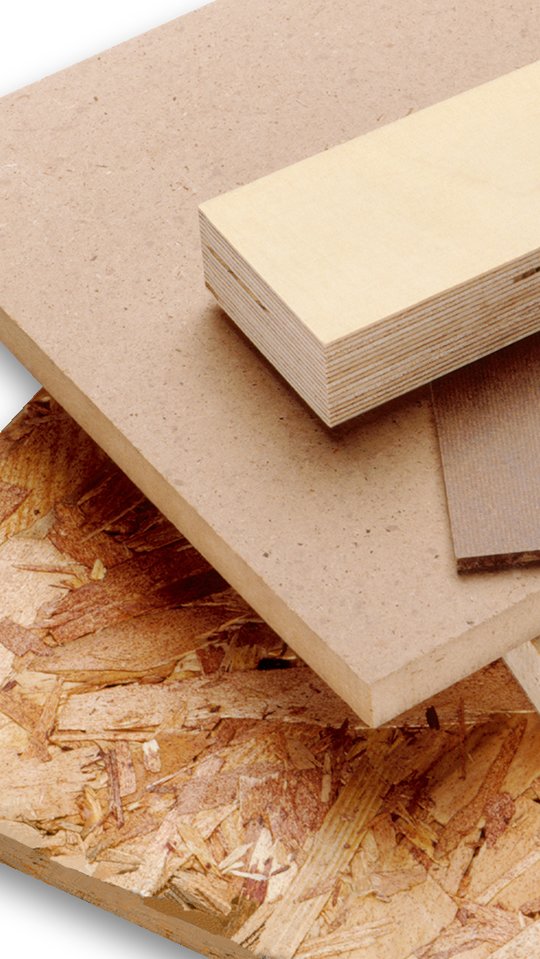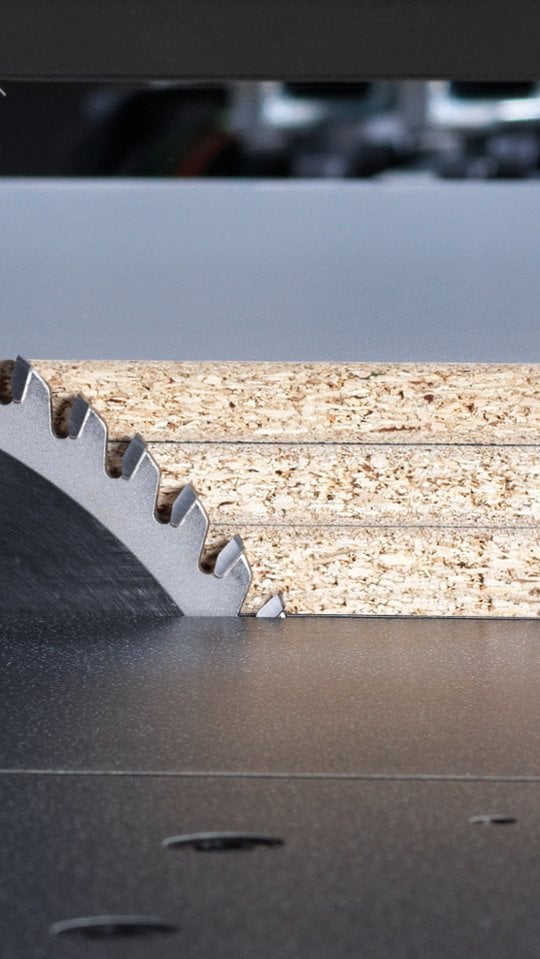
Panel material
Felder Group machines for accurate and productive processing of panel materials.

Processing of panel materials
In addition to absolutely even and robust worktables, sharp and smooth running tools are indispensable when processing panel material in order to avoid chipping or cracking of the surface.
What types of panel material are there?
The layers of the boards are glued crosswise to each other in the direction of the fibres, which results in high stability and strength. The multiplex board consists of at least five layers and has a minimum thickness of 12 millimetres. This veneer plywood panel is mainly used as large-area construction elements in timber constructions. The blockboard consists of at least three layers. Between the top veneers, a central layer of transverse strips ensures a high load-bearing capacity. It is mainly used in furniture construction.
Chipboard is produced from sawdust and wood shavings, i.e. from the waste products of the timber industry or from the fresh wood from thinning. The small parts are pressed non-directionally with a bonding agent. One exception, however, is the OSB board (Oriented Strand Board - board made of directionally oriented chips), which has a directional structure with 70 percent of the fibres running in the longitudinal direction. This increases the load capacity of the OSB board by a factor of two to three. OSB boards are mainly used for panelling walls, floors, ceilings or in the construction of floors.
The "gluefree massive board" is free of adhesives and can therefore also be used safely for environmentally friendly applications in interior design. With a thickness of 30 mm, it is twice as strong as an OSB board and consists of sawn, planed and dried silver fir wood.
For fibreboard, even smaller wooden elements are used than those used for chipboard. Subsequent processing is then done either using the wet process without bonding agents for soft fibre boards or the dry-process with adhesive. Soft fibre boards are used in interior construction for sound and heat insulation, MDF boards are used in furniture and interior finishing.
In contrast to the crosswise arranged fibres of plywood boards, all lamellas of solid wood boards are arranged in the same grain direction. They are most similar to solid wood and are mainly used in furniture making.















